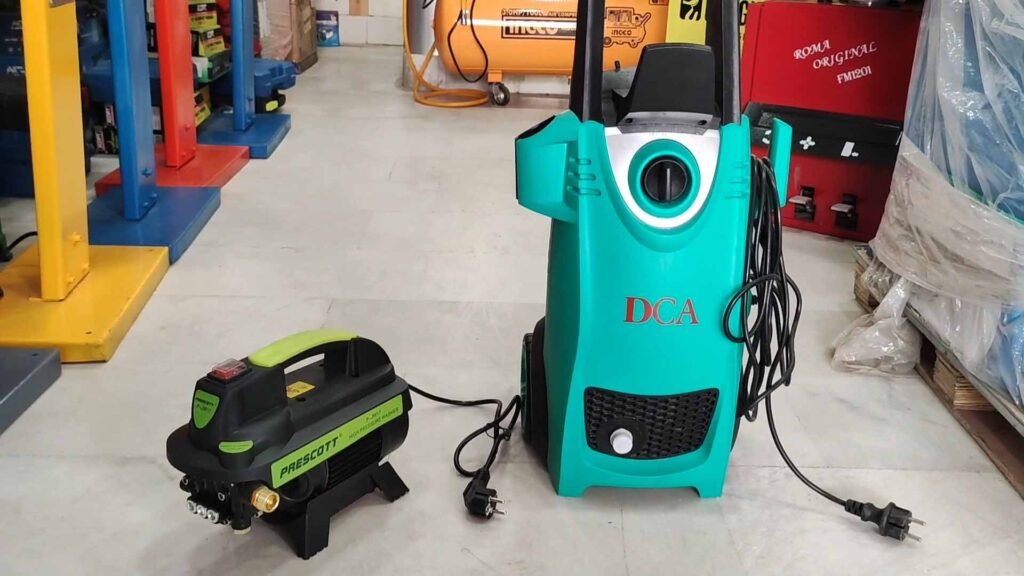Pressure washers can be helpful in cleaning many items such as cars, carpets, floors, Air conditioners outdoor units, or any other thing that is high-pressure water resistant. In this guide, we will discuss which pressure washer you should use and how to use an electric pressure washer to wash your car at home.
Types of electric pressure washers

Electric Pressure washers are commonly of two types.
- Induction motor
- Without induction motor.
Induction motor pressure washers are suitable for high pressure and can be used for long sessions continuously as compared to non-induction. They have a higher cost but are easily repairable and provide better performance.
If you are planning to buy a pressure washer you can select according to your use, but a pressure washer with an induction motor can be more useful and provide better performance.
Setting the required tools
Before starting make sure your car is parked on a straight surface and you have enough space to manage the used water droppings. All you need is the following common items.
- Pressure washer (induction motor recommended) with gun and pipe
- Water bucket
- Power socket to run pressure washer
- Foaming bottle
- Microfiber cloth
- Drying towel
Test equipment

Fill the bucket with water and put the sucking pipe in the bucket and connect its other end to the pressure washer. Now connect the other end with the output pipe with a pressure gun and test the gun on some safe ground to check the pressure and angle of the water. Make sure the water throw should not be sharp and must be split to at least 30 degrees.
Rinse

Use medium washer pressure to rinse the car. Always start with the roof and then go towards the windscreen and then the bonnet and tires respectively. Always apply the water at a significant distance as too close or too sharp water may damage the car’s paint.
Foaming

Remove the water gun and attach the foaming canon filled with the branded foaming soap. You can easily buy a suitable foaming liquid from a car detailing shop. Apply the foam to the car from the roof to the tires.
Do not apply excess foaming as although it looks satisfying, but it takes a lot of water to remove it.
Clean Manually
Use a microfiber cloth to clean the car with some pressure manually. Clean every part of the car with your hand using the microfiber cloth or you can also use a microfiber glove which is easily available in the market. Use a brush to clean the dirt and mud on the tires.
Rinse again
Finally attach the gun again and rinse the car again to remove all the foam. Always start from the roof and end up with the tires. Make sure you have applied the water with pressure on every part of the car to avoid any foaming stains.
Drying

Park the car on some other surface and dry it with the help of a drying towel. You can use a large-size microfiber towel to dry it quickly to save you time and effort.
WARNINGS
- Never test the pressure of water on any part of your body including your hand. High pressure can be harmful to your skin.
- Do not apply high pressure with a small distance and angle to the car as it may damage the paint
- It is recommended to drive the car at least 4 miles after you have washed your car to avoid any chance of rust as parking the car for long just after the wash can increase the probability of rusting.
Conclusion
Using an electric high-pressure washer not only saves your time and money but also saves water. Always use the pressure washer with moderate pressure and distance. While using the machine always place it on a smooth surface and away from the water.

